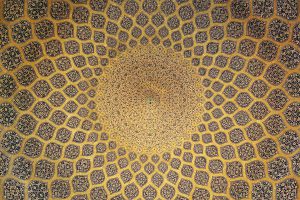سم for Ṣāḥibayn
By Mln. Abrar Habib (Takmīl Graduate, 2019)
While studying and researching the Ḥanafī Madhhab, one will come across subject-specific terminology. Many authors use an abbreviation system (ar. rumūz) to indicate to a specific scholar in the School. Most use these in their citations. However, there are other methods too, such as using grammatical patterns, like what Ibn al-Sāʿātī does in his Majmaʿ al-Baḥrayn. Herein, we will discuss how the Ḥanafīs use the letters سم for Ṣāḥibayn’s (Qāḍī Abū Yūsuf and Imām Muḥammad) opinion. Examples of the Ḥanafī jurists using the abbreviation سم to refer to them shall be presented.
وجعلت لكل اسم من أسماء الفقهاء حرفا يدل عليه من حروف الهجاء وهي لأبي يوسف س ولمحمد م ولهما سم ولزفر ز إلخ
In the introduction of al-Mukhtār, Mūṣilī mentions that he used the letters سم for Ṣāḥibayn throughout his book.[1] The following are examples:
(1)
وكل ما يخرج من بدن الإنسان وهو موجب للتطهير فنجاسته غليظة، وكذلك الروث (سم) والأخثاء
In the “Chapter of Impurities and the methods of purifying them,” Mawṣilī states that dung is treated as najāsah ghalīẓah. He then uses the سم to indicate that Ṣāḥibayn disagreed with this.[2] According to them, dung will be treated as najāsah khafīfah.
In his al-Baḥr al-Rā’iq, Zayn al-Dīn b. Nujaym clearly states that Imām Abū Ḥanīfah regarded dung to be najāsah ghalīẓah and Ṣāḥibayn said it is better not to use it.[3] See the following passage,
ولا خلاف في تغليظ غائط الآدمي ونجو الكلب ورجيع السباع واختلفوا فيما عداه فعنده غليظة لقوله – عليه السلام – «في الروثة أنها ركس» أي نجس ولم يعارض وعندهما خفيفة
(2)
ثم يرفع رأسه ويقول: سمع الله لمن حمده، ويقول المؤتم: ربنا لك الحمد (سم ف)
Mawṣilī mentions that an imām should only recite “samiʿa Allāhu li man ḥamidah” and the congregators should only recite “rabbanā laka al-ḥamd” when rising up from rukūʿ. He uses the سم because Ṣāḥibayn disagreed. According to them, the imām should recite both.[4]
In his commentary on Mukhtaṣar al-Ṭaḥāwī, al-Jaṣṣāṣ al-Rāzī clearly states that Ṣāḥibayn are of the opinion that the imām should recite both. See the following passage,
وأما في قول أبي يوسف ومحمد: فإن المنفرد والإمام يجمعان بينهما جميعا
(3)
ومقدار الفرض آية في كل ركعة (سم ف)
Mawṣilī states that it is a farḍ component of ṣalāh to recite at least one verse in every rakaʿah (trans. unit of prayer). He uses the سم because Ṣāḥibayn disagreed. According to them, the farḍ component is to recite a minimum of three short verses or one long verse.[5]
In his Mukhtaṣar, Qudūrī clearly states that Ṣāḥibayn were of this opinion.[6] See the following passage,
وقال يوسف ومحمد: لا يجزئ أقل من ثلاث آيات قصار أو آية طويلة
And Allāh knows best.
[1] al-Ikhtiyār li Taʿlīl al-Mukhtār, 1:6.
[2] al-Ikhtiyār li Taʿlīl al-Mukhtār, 1:32.
[3] al-Baḥr al-Rā’iq, 1:242.
[4] al-Ikhtiyār li Taʿlīl al-Mukhtār, 1:51.
[5] al-Ikhtiyār li Taʿlīl al-Mukhtār, 1:56.
[6] Mukhtaṣar al-Qudūrī, 29.


